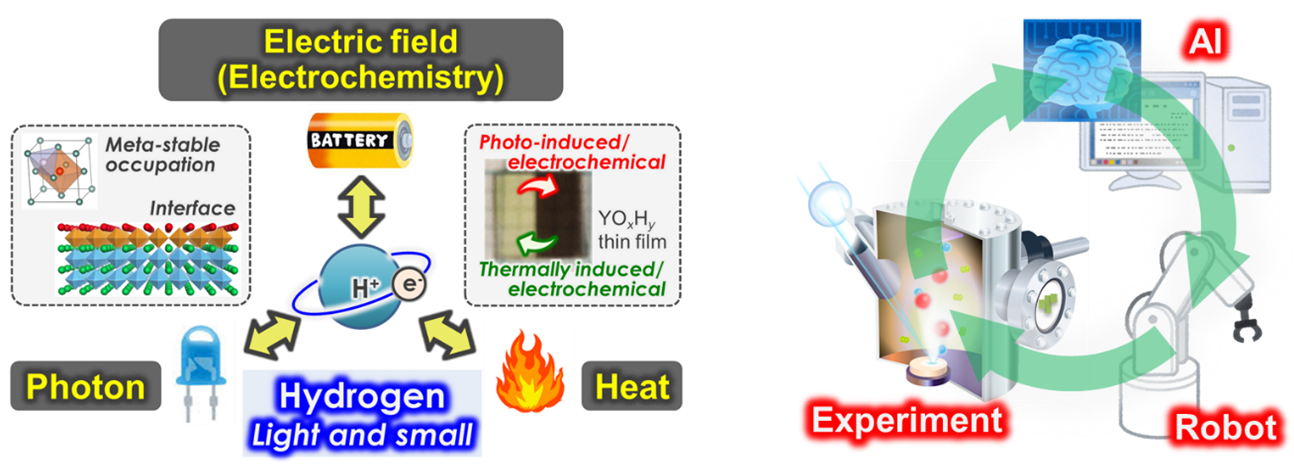Our group started at Institute for Molecular Science (IMS) in April 2025. We explore novel electronic and ionic properties of inorganic solids, especially thin-film materials, from the atomic and molecular level.
Graduate Student Recruitment:: IMS accepts graduate students through Molecular Science program at SOKENDAI (The Graduate University for Advanced Studies). A financial support system is available: students can receive Research Assistant (RA) support from the master's course, and also take advantage of Teaching Assistant (TA) positions and various scholarships. If you are interested, please feel free to contact us.
Interfaces exhibit unique phenomena. In transistors, charges can be induced at the interface, leading to applications in electronic devices. In lithium batteries, the movement of lithium is hindered by the interface between the electrode and the electrolyte, which degrades battery performance. We create and model such interfaces to explore novel electronic and ionic properties using thin film technology. For example, we are working on the synthesis of metastable metal hydrides that do not exist in bulk materials, exploring new physical properties by controlling the hydrogen charge state in solids, and elucidating the mechanisms of interface modification to improve performance in fluoride-ion batteries.
Furthermore, to accelerate materials research, we are also working on laboratory automation. Traditionally, materials were carefully synthesized and optimized one by one to evaluate their electronic and ionic properties. In this context, we are introducing robots and AI technologies. The use of robots allows experiments to be conducted in extreme environments, such as inert gas atmospheres or X-ray irradiation conditions, where humans cannot enter. Our goal is to advance the automation of experiments and promote the coexistence of humans and robots in materials research.

Selected References
Professor | Ryota SHIMIZU |
Project Lecturer | Jana LUSTIKOVA |
Secretary | Ayaka NODA |
Myodaiji Campus : 7 min. on foot from Meitetsu Higashi-Okazaki Station